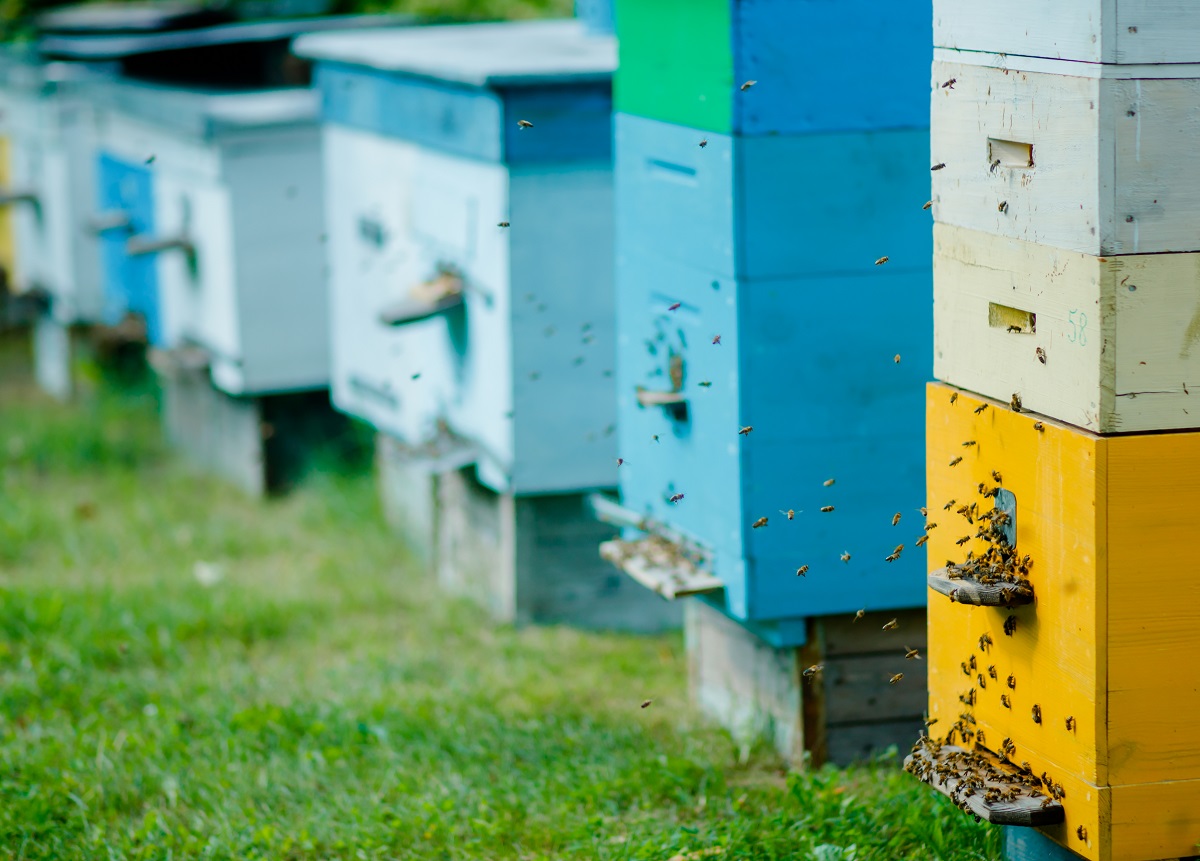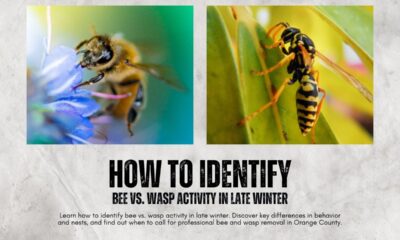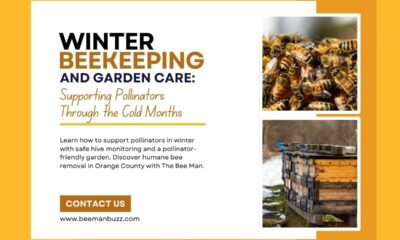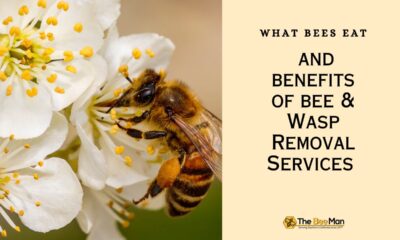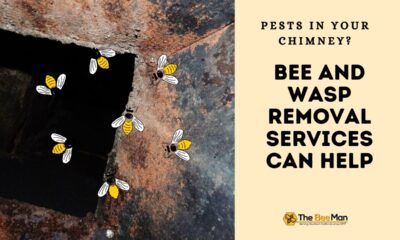Home Improvement
How to Create a Dwelling Place and an Insect Hotel
At any time, your garden may contain more than 2,000 insects. Some of them are pests, and which can destroy your flowers and vegetables, but many others are beneficial insects that control pests and pollinate flowers.
An Insect Hotel attracts beneficial Insects
Beneficial insects support biodiversity, which is at the heart of microenvironments health. An “insect hotel” provides them with a refuge to reproduce and recuperate during the winter.
If you place an insect hotel in the garden, it increases the chances of beneficial insects entering the garden naturally, and these made-made structures, also known as bed bug hotels, insect boxes, and worm houses, offer a variety of benefits. A balanced ecosystem benefits not only individual gardens but also offers many benefits to the entire local environment.
Seek professional help from Bee Removal Orange County if you want to remove the bees.
The benefits of insect hotels include:
• Stimulating local biodiversity in your garden
• Encourage beneficial insects to help control pests
• Provide opportunities to educate children on how to maintain a function micro-ecosystem
Natural pest control
Welcome beneficial insects and pollinators into your garden to reduce or eliminate the need for pesticides. Insecticides kill weeds and nasty insects but cannot often distinguish between friend and foe, killing many beneficial insects in the process.
According to the US Department of Agriculture’s Natural Resources Conservation Authority, three-quarters of the world’s flowering plants and about 35% of the world’s food crops are bred by animal pollinators, with approximately one out of every three foods we consume depending upon animal pollinators including bees, birds, bats, beetles, and other insects.
If you are searching for bee removal services, you can reach out to the providers in Orange County.
Beneficial Insect Communities
Albert Einstein once said, “Humans will also not survive if bees disappear for more than five years.”
Bees
Einstein is right again, for about one-third of the global food supply depends on pollination. Bees are vital to the production of fruits and vegetables, and their loss can also harm the food chain.
Along with the pesticides, the harsh winters and droughts caused by climate change have also played a role in the decline in the number of overall bee colonies. As a gardener, however, there are a number of options available to you help maintain the health and safety of wild bees.
Talking about the Birds and Bees
Although bees are known for their role as pollinators, they are not the only pollinators that can create insect hotels. Other beneficial insects include beetles, butterflies, green grasshoppers, leaf miners, whiteflies, moles, cabbage worms, hummingbirds, and bats, so there is no need to be picky!
Beetles
Some people say that more than 100 million years ago beetles evolved into the first insect pollinators, and today beetles still pollinate more than 88% of eligible flowering plants – more than any other animal!.
Hummingbirds
Interestingly, hummingbirds almost exclusively pollinate flowers that are upside-down. By feeding the birds with artificial flowers and then recording them with a high-speed lens, the researchers found that hummingbirds consumed 10% more energy from upside-down flowers than flowers oriented from the bottom-up, explaining the bird’s unique preference.
Butterflies
Although not as efficient as bees when pollinating, butterflies are still crucial for a successful and healthy garden, for unlike honeybees, butterflies can see red and are thus more effective at pollinating red and other brightly colored flowers. To attract the opposite sex, the butterfly emits pheromones, which are very similar to the smell of certain flowers drawn by other butterflies.
Bats
In addition to the insect hotel, consider placing a bat house in your garden, as many bats are pollinators while others are insectivores. An insect-eating bat can consume 60 medium-sized moths or more than 1,000 mosquito-sized insects in a single night, helping to spare your garden of these destructive pests.
Bats are essential pollinators for desert plants, such as cacti and agave – the source of the popular tequila drink – but they also pollinate most of the vegetation in the rainforest. More than 500 fruits and vegetables rely on bat pollination flowers!
The presence of avocados, bananas, carob, cashews, cloves, red dates, durians, figs, guava, mangoes, and peaches is mainly due to the pollination they get from night pollinators such as bats.
Insect Hotel: Buy or DIY?
Different insects need different accommodations to thrive. Before you decide what sort of insect hotel to buy or make, do some research on the climate in your area. Although there are many insect hotels available for purchase, building your own insect hotel can be a relatively simple, fun, and an educational DIY project that you can do with your kids.
Using a variety of natural materials, you can create a perfect bug or bee apartment for every insect you desire.
If you need Bee Removal Orange County stores that provide affordable equipment.
The Location of your Bug Hotel
Your Bee hotel needs to be a high-rise building to stay away from pesky ants, who will often make a meal of bee larvae. Other insect boxes need sheltered but sunny areas surrounded by a variety of flowering and insect plants (plants that attract and capture beneficial insects).
Beekeepers from all over the world have created insect hotels that combine art and environmental creativity. Who knows, maybe you will be inspired to build a better insect house – if everything fails, there is always a ready-made house, and either way your bug friends will love it!

